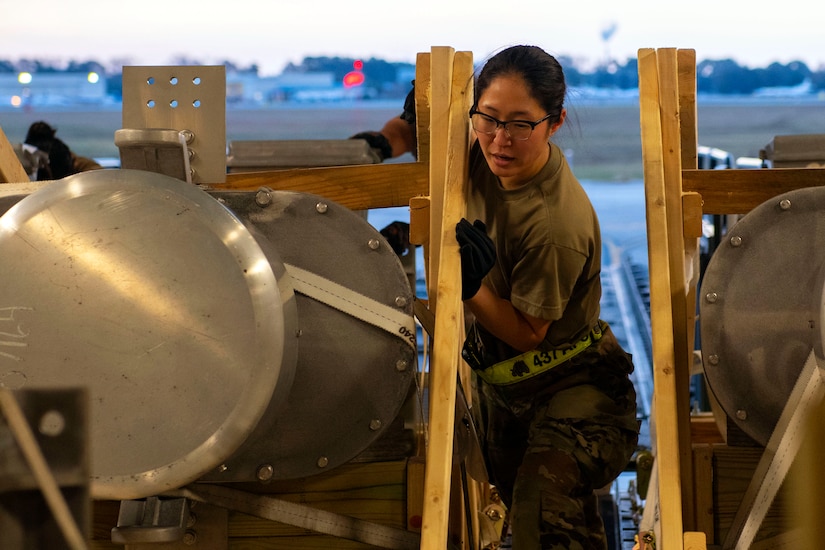As the conflict in Ukraine surpassed its 600th day earlier this month, National Armaments Directors from more than 40 countries, the European Union and NATO gathered in Brussels, Belgium on October 20, 2023, under the auspices of the Ukraine Defense Contact Group. Meeting for the seventh time, the group was established to synchronize international efforts on industrial base and sustainment challenges in support of Ukraine.
In addition to updates on meeting near-term requirements for key capability areas—including ground-based, long-range fires; integrated air defense systems; air-to-ground capabilities; and sustainment—the session highlighted increasing focus on long-term support to Ukraine.
“Since coming together, this group of National Armaments Directors has demonstrated a unique ability to drive meaningful action and get the Ukrainian armed forces the equipment they need to defend their sovereignty,” said Under Secretary of Defense for Acquisition and Sustainment William LaPlante, who leads the forum. “But we know our work isn’t done yet as we assist Ukrainian efforts in building their future force to defend their citizens.”
NADs are particularly focused on long-term sustainment support and industrial base resilience.
“The innovation and resourcefulness the Ukrainians have demonstrated to keep equipment in the fight is nothing short of remarkable,” said Christopher Lowman, Assistant Secretary of Defense for Sustainment. “As the number of different systems and platforms donated continues to increase, employing a coordinated approach to sustaining them with our allies and partners will be critical for maximizing Ukraine’s combat power into the future.”
Within the UDCG NAD forum, development of a long-term, doctrinal sustainment strategy for Ukraine is nearing completion. Aligned with NATO standards, the strategy will touch on everything from maintenance, repair, and overhaul of equipment; expansion of, and training for, logistics information technology systems; and availability of technical data packages for spare parts.
“Whether we’re talking about maintaining an Abrams tank or F-16, these efforts will ensure appropriate support is pushed forward to enable Ukraine’s success while safeguarding against third-party transfers and protecting proprietary rights,” Lowman said. “And across the board, the sustainment work being done at the NAD level will directly support the capability coalitions being established at the ministerial level.”
At the 16th meeting of the full Contact Group on Oct. 11, 2023, Secretary of Defense Lloyd J. Austin III expanded on his vision for long-term coordination of contributions in major capability areas through focused coalitions.
“We have already organized highly effective coalitions focused on Leopard tanks and F-16 training, which have marshalled resources from multiple countries,” Austin told ministers and senior defense leaders. “But now, we’re taking this concept a bit further. We’re asking countries to organize coalitions focused on wider capabilities, beyond just specific platforms.”
Additional capability coalitions currently include information technology infrastructure and demining efforts, with others expected to form in the coming weeks and months. The United States jointly lead the F-16 coalition alongside Denmark and the Netherlands.
“Just as this Contact Group surged capabilities to support Ukraine’s immediate needs, we will also organize ourselves to coordinate our investments in Ukraine’s future force,” Austin added.
At the NAD level, those efforts include exploring approaches to aid Ukraine in its efforts to expand the capacity and capability of its domestic industrial base.
“Increasing domestic production in Ukraine will have immediate operational benefits, especially when it comes to munitions and air defense capabilities,” LaPlante said, “but it will also contribute significantly to the growth of Ukraine’s economy with quality new jobs.”
From facilitating industry introductions and refining business case proposals, to determining short- and long-term objectives of the Ukrainian defense industrial base, the U.S. and its allies and partners are focused on identifying specific mechanisms to enhance industry partnership with Ukraine.
“While there are certainly some challenges we’re working through collectively, I’m encouraged by the progress being made across the interagency here in the United States as well as globally with our partners abroad,” LaPlante said. “We strongly support Ukraine’s vision for its domestic production, and I look forward to advancing the work already underway not only through the UDCG NAD forum, but through other collaborative engagements in the coming weeks as well.”
The next UDCG NAD meeting is expected to take place in December 2023.









